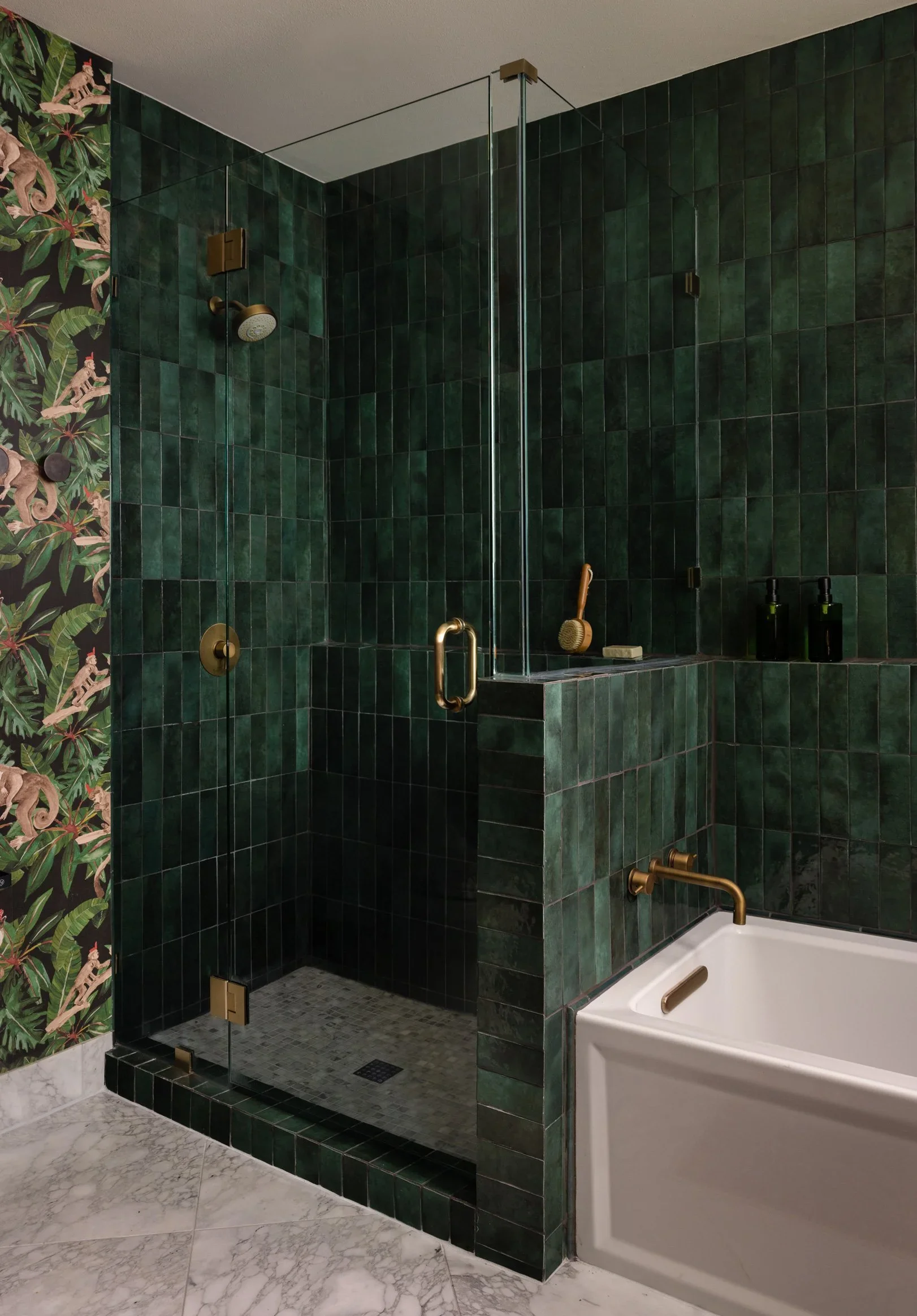october 2025
Breaking The Template
A Blunt Rebuttal of Formulaic Custom Residential Design
I’m just going to get right to the controversial point: most so-called custom home design today has no soul. What’s pitched as bespoke interiors is, in reality, a copy-paste template that’s been rinsed and repeated until every new house looks like a slightly tweaked version of the one next door.
We all know the look: the layouts are predictable. The finishes are safe. The decisions are made less for the people who will live in the home, and more for hypothetical future buyers. But what about enjoying homes for the here and now?
The template is broken, and we’re working to fix it. You’re familiar with the script: (wide) open plans, homes sheathed in a single (usually white) paint color throughout because there are no stopping points, “farmhouse-y” oak floors, black-framed windows, mystery stone look-alike countertops, and a smattering of midcentury-modern knock-off furniture and fixtures pulled from the same few retailers. It’s a Pinterest board come to life—different addresses for the same house.
Where are the surprises? The hidden nooks, the intimate corners, the small details that whisper of the people who live there?
We’ve become victims of algorithmic design. Social media feeds the public a narrow vision of what a home “should” look like, and over time it becomes all people see—and all they desire. The expectation of immediate gratification means the long lead times that inevitably come with producing great work are questioned.
The tragedy is that this process erases individuality. Quirks, histories, and contradictions get flattened into aesthetics that appeal to the masses but say nothing about the humans inside. In chasing what’s universally appealing, we’ve lost what makes a home personal.
Our Rebellion: The Bold Shifts We’re Making
Every home we design tells a story. Not a brand story, not a market story—a crafted personal narrative. Our residential interior design process begins with listening and discovery, learning what resonates with our clients emotionally.
We lean into unexpected pairings—raw meets refined, patina meets precision. We use design principles to balance texture, tone, and light. Materials are chosen to conjure memory, mood, and meaning. And we design for lived rituals—morning coffee spots, quiet reading corners, messy family dinners.
We spend more time on our sofas, in our kitchens, in our bedrooms, bathrooms, and yards than anywhere else. So why shouldn’t our homes be immersive, personal experiences?
This isn’t the fastest or easiest approach, and it’s certainly not the most profitable. From a business standpoint, we don’t benefit from bulk pricing that leads to larger margins because every element we bring in is unique to that space. We don’t create efficiencies by using the same architectural details over and over.
Instead, we invest in custom fabrication and custom furniture design, celebrating craft and individuality in every detail. Our design development process involves collaboration with artisans, makers, and builders who share our belief that beauty is found in imperfection.
We choose this path anyway—guiding our clients toward finding and telling their stories through their homes, showing our collaborators what comes from stepping outside comfort zones just a bit. The reward is creativity, fulfillment, and soulful homes with timeless interiors and lasting depth.
Rejecting the template doesn’t mean every choice is extravagant or entirely bespoke. In fact, the magic often lies in the contrasts: push and pull, a high-low mix, bold and quiet, daring and humble. That tension—and balance—creates homes that feel alive.
Let’s be clear: good design should not be reserved for the ultra-wealthy. Everyone deserves a home that feels intentional, personal, and real, no matter the budget. It’s about thoughtful design, not excess.
We know this means we’re not for everyone—and that’s exactly the point. We’re out to create the raw, the real, and the radically personal.
Looking Ahead
Despite what trend-watchers continue to push, we’re hearing whispers (or, in some cases, shouts) that people are ready for a change. History tells us that in uncertain times, people crave spaces that nurture, comfort, and remind us of who we are.
British design’s cozy maximalism has already crossed the Atlantic, layering heritage and history into everyday spaces. As the world moves at warp speed, people are slowly starting to appreciate craft and artistry, and the time it takes to create something unique.
My hope is that we’ll see a broader shift toward homes rooted in heritage and timeless design, where luxury home design once again means care, individuality, and meaning—not trends or mass appeal.


